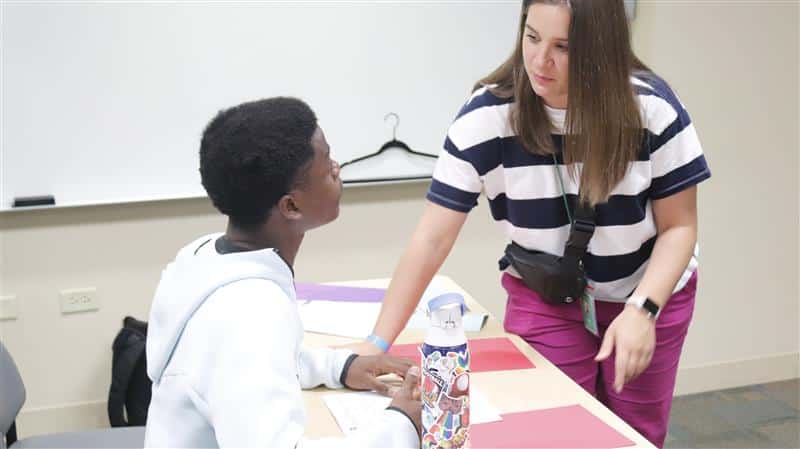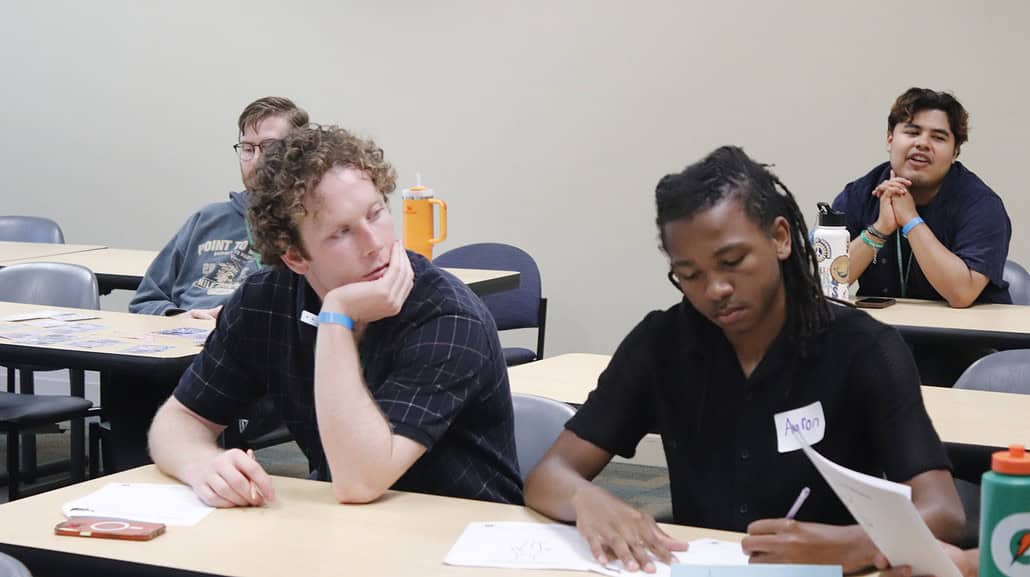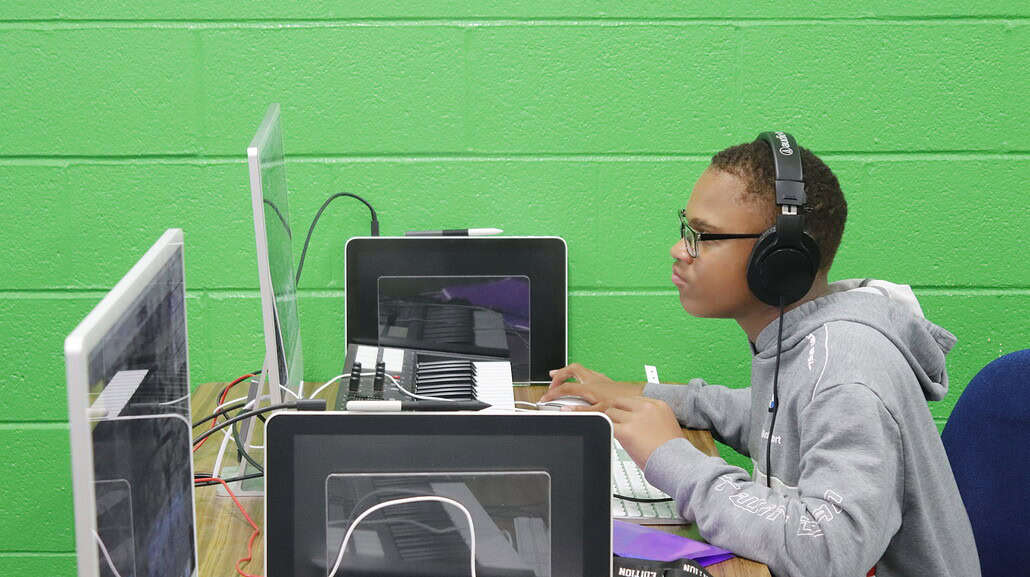Paying It Forward: Celebrating Gratitude This Thanksgiving
Our young people marked Thanksgiving week with spiritual celebrations at both of our locations and meals featuring all the classic...
December 3, 2025
October 30, 2025
One of the first and most critical tasks of Mercy Home’s admissions process is placing a new resident in the most appropriate school or academic setting.
Before a young person comes to live with us, families meet with our coworkers and conduct an educational assessment where they review that young person’s school records. This includes transcripts, behavior logs, and absences as well as the student’s future educational goals.

But the first question that Mercy Home asks families is whether they are open to transferring from the young person’s current school. If the school is not within a 45-minute drive or one-hour self-transporting distance from Mercy Home, it is often advised that they transfer to a new school. This can present a challenge for some families.
“Transfers are only talked about if it’s a distance (issue), if the parent doesn’t want them to attend that school or if it’s a huge safety concern,” said Nichole Martinez, a senior case manager at Mercy Home. She added that it’s also important to ensure that the services required in a child’s Individual Educational Plan, or IEP, are being provided by the school.
While some youth have no issues at their current school and remain there while living at Mercy Home, it isn’t always the case. Much like many aspects of the admissions process, each situation varies by individual.
“A school is going to be a bad fit if the youth has been struggling academically, with peers or getting into altercations,” Jake Pizzitola, an Education Resource Coordinator said. “Usually, the issues are a repeated history. Then, we’ll try to find a different school that’s more suitable for their needs.”
Since the move to Mercy Home can be such a dramatic transition in a young person’s life, education resource coordinators try to wait until the end of a semester if they are going to make the school switch.

“It’s better than ripping them out of school and placing them in a short-term fit,” Pizzitola said. “You want to limit transitions in a youth’s life, especially academically. Ideally, we would place them in a new school that they could stay at when they move back home. But sometimes, if we are going to place a youth in a school that they won’t stay at permanently when they move back home, it’s going to be because the school is going to be providing them with something of value that they’re missing right now.”
When a young person is looking at schools, they typically have a few options. They can attend the public school closest to their home, the public school closest to Mercy Home, a charter school or a private school.
“If a youth is coming from a CPS school that they’re struggling in behaviorally, just moving them to a different CPS school is not often the answer. You might want to think outside the box. Sometimes, that’s a private placement or a charter placement school.”
One avenue that is often used is the Central Area Choice Schools Program. CPS has a few schools around the city that kids can attend even if they don’t live in that neighborhood. Sometimes, those are a good refuge for kids who come from schools where there’s been a lot of behavioral issues, and they want to be around kids working on similar issues.
Pizzitola said that so far, he’s worked with 18 youth and 24 different schools. Many of the young people he has worked with changed schools when they arrived at Mercy Home.

“Our local schools know us very well,” Pizzitola said. “I have a great relationship with the staff at Skinner West (an elementary school about a block west of Mercy Home’s West Loop Campus). Not giving (our kids) extra leniency but being more proactive in communicating with me. Usually, when I get introduced to a staff at a new school, when they know that this child has lots of advocates around them, they’re very excited.”
In his role as education coordinator, it is Pizzitola’s job to connect with the schools. He establishes a relationship with a contact person, often a social worker, a counselor or a principal, and lets them know what Mercy Home is and what we do.
“Oftentimes, these kids haven’t been advocated for before,” said Education Resources Director Sergio Rodriguez. “The goal is for them to become the kid’s advocate. They are the voice of the parents and the youth to make sure that their needs are met.”
One of the common early struggles that Mercy Home sees is the difficulty in establishing a new social network. That’s why education coordinators encourage the young people to join extracurricular activities either at school or at Mercy Home.
“I give these youth a lot of credit for being resilient,” Rodriguez said. “Some kids are from different neighborhoods and start to miss their old friends. It can be very challenging.”
Overall, our school placement strategies help our young people progress academically. Many are behind in school when they arrive at Mercy Home. Some are not attending school at all. But with the wrap around support we provide and the academic resources we make available, they improve their grades and matriculate and graduate at rates well above local and national averages.
Our young people marked Thanksgiving week with spiritual celebrations at both of our locations and meals featuring all the classic...
December 3, 2025
As people traveled near and far to be with loved ones this Thanksgiving, we hosted a special celebration for Community...
December 3, 2025
On November 19, the Ambassadors of Mercy board, along with friends and families who volunteered, packed 130 meal kits for...
December 3, 2025
Comments